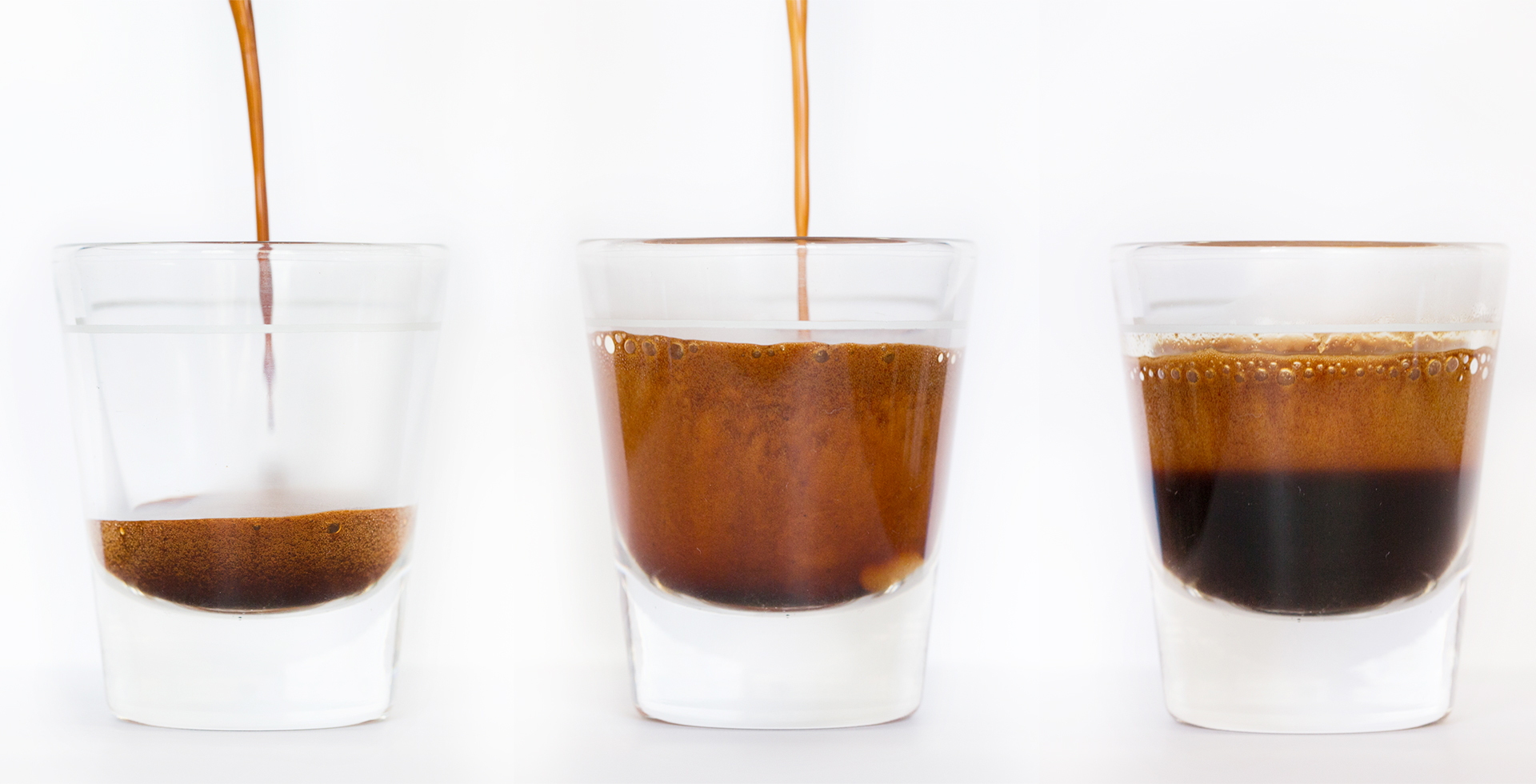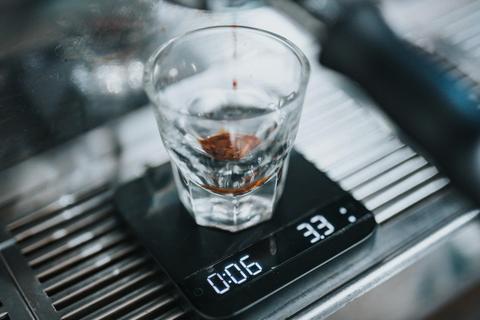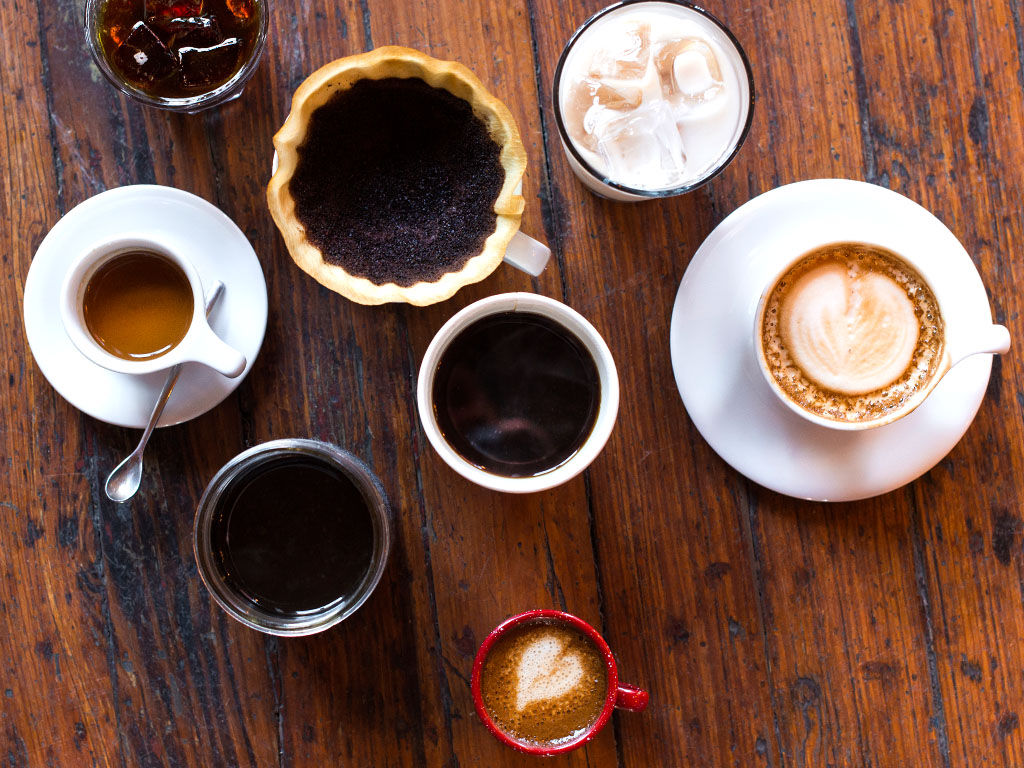Zero-based discriminative concentration-how to quickly and accurately compare the quality of Espresso?
Professional coffee knowledge exchange more coffee bean information please follow the coffee workshop (Wechat official account cafe_style)
The extraction of coffee mainly uses the diffusion of coffee powder in water and the flushing force of water itself to convert the soluble solid substance in coffee fiber into a cup of liquid coffee.
The soluble solid substances that are diffused and washed have a sequence, so there is a significant difference in the taste of coffee at each stage. If you drink the brewed coffee in stages in the brewing process, you will get the strong sour taste at the beginning, the sweetness from the sour taste to the sweet taste in the middle, and the light and mild feeling at the end. If you continue to brew your coffee, you will get a concentration that turns to tea, but full of bitter flavor. If you drink espresso in stages, you can basically get a similar flavor development phenomenon. This sequence implies one thing: through the ratio of water to powder, there is an explanatory order for the development of flavor.

The difference between Espresso and ordinary follicle extraction is that in the espresso brewing process, the water is forced through under pressure; generally speaking, if the brewing environment is right, the taste order of coffee segments will be almost the same as that of filtered coffee. It's just, what if it's not a "right cooking environment", or what if there is a flavor development that goes against the typical taste order?
Espresso is extracted by pressurized water, so when the powder layer due to a number of factors, the water can not evenly pass through, there will be a channel effect. Water always finds a simple way to move forward in the powder bed. Lazy water will pass through the vulnerable points in the powder layer first, making the powder layer near the channel excessively extracted, resulting in scorched bitterness; on the other hand, the powder layer outside the channel produces a sour feeling of insufficient sweetness extraction. Using this property, coupled with the experiment of split-cup extraction, we can examine whether our boiled espresso has channel effect.
Similarly, baristas can taste coffee in three parts. When the coffee comes out of the first drop of the shunt, start the clock and stop the clock when it reaches the end point you want. Cut this time into three equal portions, then make it again, put the coffee from these three periods into three different cups, and then taste it.
For instance. Suppose we use 18g powder to extract espresso of 60cc for 30 seconds (equivalent to 36g by weight). Assuming the first drop in the sixth second, we set the interval of each segment as (30 seconds-6 seconds) / 3 = 8 seconds. We will receive a cup (called A Cup) in 14 seconds in 6muri (called A Cup), a cup in 22 seconds (called B Cup) in 14muri, and a cup in 30 seconds (called C Cup) in 22Murray.
If this is an espresso operation setting that allows you to boil the powder than 1:2, then in the A cup, you will drink a strong and sour flavor, and then the B cup will significantly reduce the sour taste and increase the sweetness; normally, the C cup coffee is very watery, but it does not go so far as to have a bad bitter and scorched taste. Taken together, this Aban B + C cup is an espresso that makes you feel sour and sweet, the aroma is suitable, and it is not scorched or bitter. If you like stronger coffee, it may be cut off in the middle of C, so you can get a smaller but stronger taste. So to put it simply, the C cup is used to reconcile the concentration. If you are curious about the taste of the fourth or fifth cup, of course you can pick it up and have a drink. In general, what you can drink is a light, but full of charred and bitter segments.
With good enough coffee beans and regular error-free operation, the third cup should not have a disgusting smell. Is it possible that the defective flavor appeared early in the third cup? If you do get such a result, the cause may be the poor condition of the bean grinder (too much fine powder, too blunt grinding plate), poor design of the filler (including tightness and bottom shape), and poor filling pressure; sometimes, the shape of the powder trough and the height of the powder filling will also be affected. These phenomena that lead to uneven extraction can also be referred to as the channel effect for short. Because of the above factors, the water drills out a channel in the powder layer, making it impossible for the water to wash evenly through the powder layer; those overwashed powder layers will show excessive extraction. As for those powder layers that are not scoured enough, there is a lack of extraction. Therefore, the comprehensive coffee may be bitter and sour, the consistency is also greatly reduced, and the point is: the development of sweetness is insufficient.
When evaluating a large amount of espresso, drinking constantly may cause taste fatigue. In order to save time and sensory ability, we can only quickly evaluate the C cup, because when the defect smell of the C cup is diluted to a whole cup (A+B+C), the defect may become ambiguous, but when drinking the C cup alone, the good or bad will become very clear.

This method can also be used to compare the advantages and disadvantages of different techniques or tools. In the comparison of the pros and cons, often because the results are not clear, so we can not get a clear effect comparison. At this time, we can use the three-equal method to compare the C cup made by different techniques or instruments, and identify the cup with more defects, which corresponds to a relatively poor method of operation or tool.
For example, try using your usual filter cup and stuffing it with a standard amount of powder, but one cup uses 57mm, one cup uses 58mm, and one cup uses 58.5mm. Compare the C cup boiled by these three types of fillers, and believe me, you can quickly and clearly compare the advantages and disadvantages of these three types of fillers. The same question: arc or plane? Straight cylinder filter cup or internal shrinkage filter cup? Is it better to have a small flat knife or a big flat knife? You don't have to drink espresso until your tongue is numb, your stomach is swollen, your heart beats and your hands are shaking. Have a third drink and you will soon have the answer.
Remember, objectively speaking, each operating system may be virtually optimized because of its own habits. So the results you get in your system may not be applicable to others. Therefore, objective comparison is the safest way to judge methods and tools.
Article source: mojocoffee
END
Important Notice :
前街咖啡 FrontStreet Coffee has moved to new addredd:
FrontStreet Coffee Address: 315,Donghua East Road,GuangZhou
Tel:020 38364473
- Prev

What are the scoring items in the SCAA Cup test table? what are the scoring contents?
The first scoring item: cleanliness is a very important and necessary condition for high-quality products, which means that there is no defect and defective taste (complete freedom from taints or faults), coffee is rotten, earthy, iodine, fermented acid, rubber, onions, astringency and other bad taste and touch, all indicate that it is not clean enough. The second score item: sweetness
- Next

What kind of coffee should I order in a boutique coffee shop? Detailed explanation of the menu of boutique coffee shop!
Professional coffee knowledge exchange more coffee bean information Please follow the coffee workshop (Wechat official account cafe_style) with the third wave of coffee coming, the level of domestic coffee consumption is growing rapidly, and boutique coffee shops are all over the street. Walk into a boutique coffee shop and you will find that they are completely different from Starbucks: different menus, different equipment, and even orders
Related
- Beginners will see the "Coffee pull flower" guide!
- What is the difference between ice blog purified milk and ordinary milk coffee?
- Why is the Philippines the largest producer of crops in Liberia?
- For coffee extraction, should the fine powder be retained?
- How does extracted espresso fill pressed powder? How much strength does it take to press the powder?
- How to make jasmine cold extract coffee? Is the jasmine + latte good?
- Will this little toy really make the coffee taste better? How does Lily Drip affect coffee extraction?
- Will the action of slapping the filter cup also affect coffee extraction?
- What's the difference between powder-to-water ratio and powder-to-liquid ratio?
- What is the Ethiopian local species? What does it have to do with Heirloom native species?

